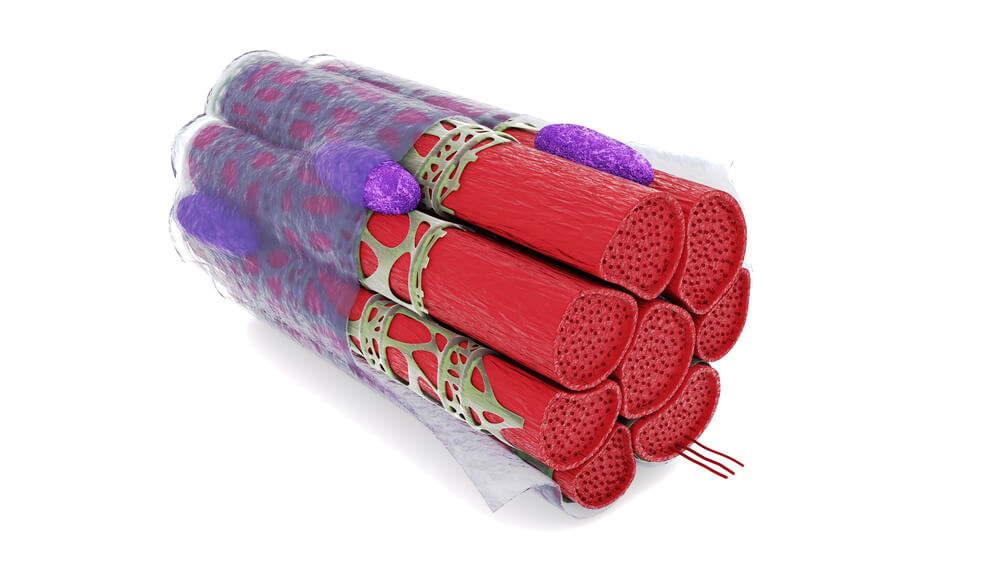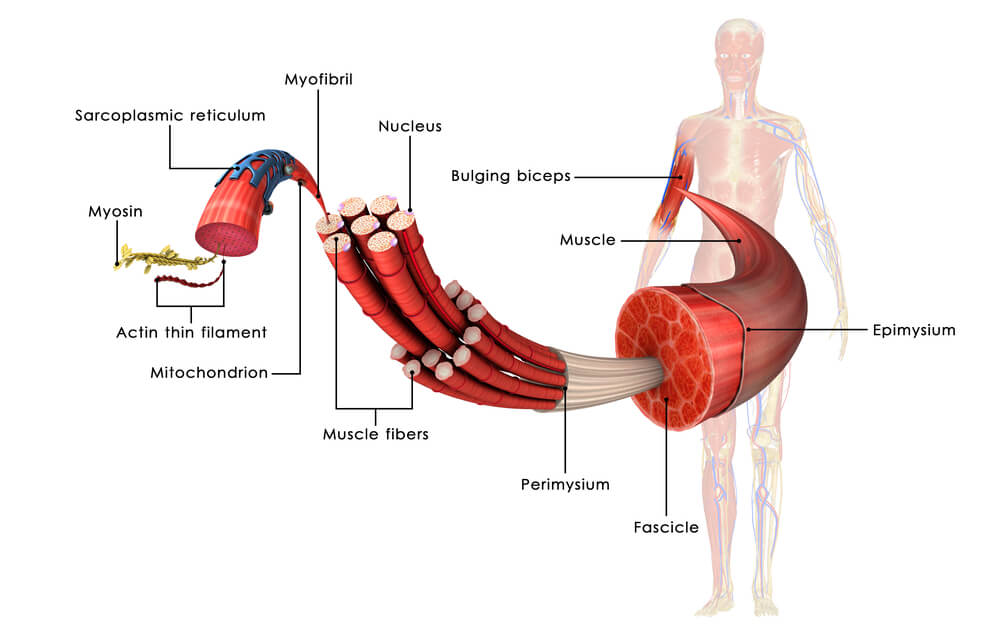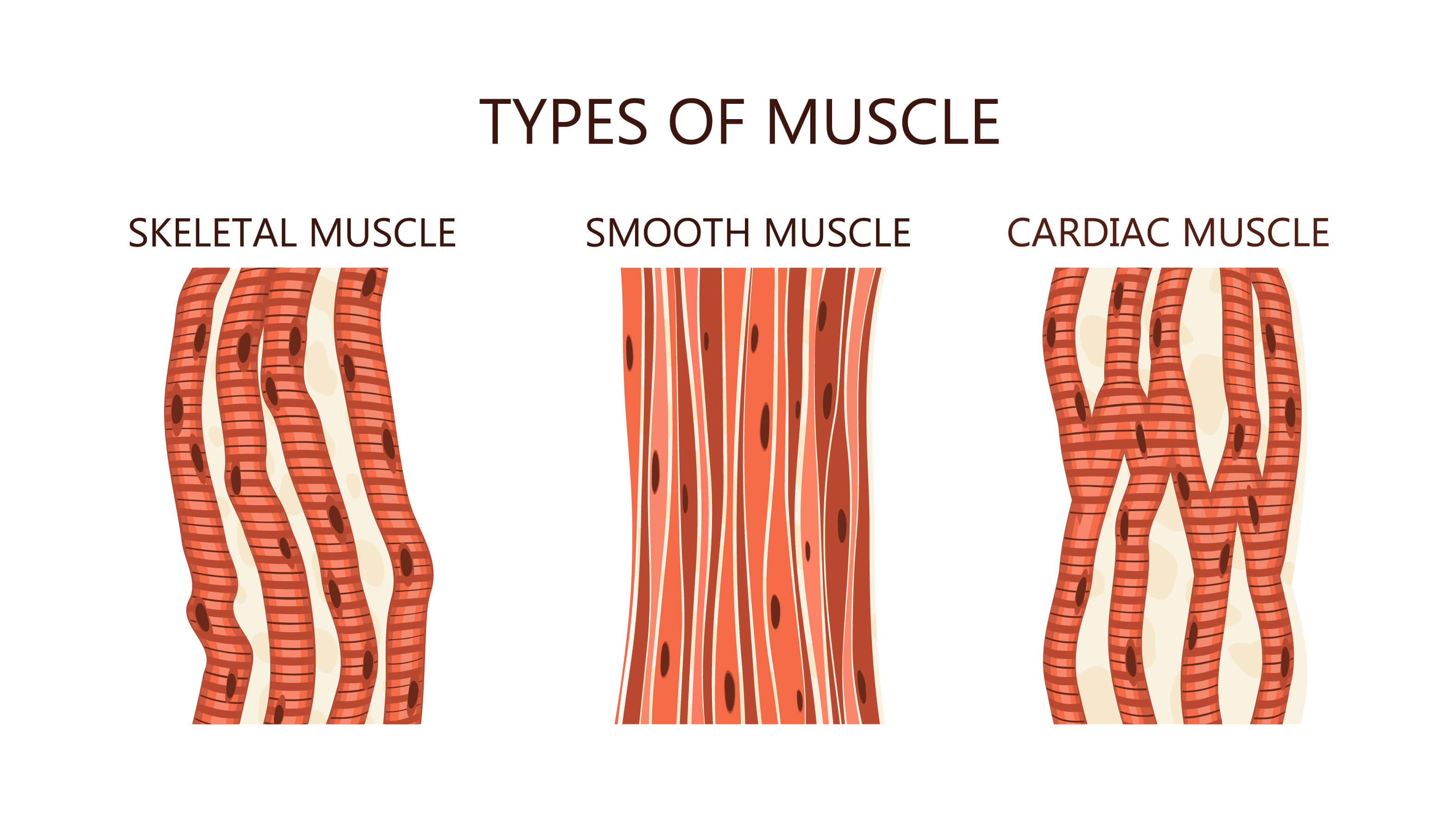Do you find when working out at the gym you’re able to run mile after mile on the treadmill but try to sprint 100 yards and you’re dead to the world?
Maybe you feel the exact opposite.
Why is that, anyway?
Shouldn’t you be able to either do both or neither?
The reasoning behind it is actually based on slow twitch and fast twitch muscle fibers. Understanding the difference, how to train the different muscles and how each can help you perform is essential if you want to take your body to newer, greater heights.
Let us show you what slow twitch muscle fibers are and how these muscles can help your performance.
Slow Twitch Muscle Fibers vs Fast Twitch Muscles
Looking to pack on big muscles?
If you’re hitting the gym, lifting weights and doing what you can to build your physique, you’re training your fast twitch muscle fibers (these muscles are also referred to as Type II). Fast twitch muscle fibers generate your power. These fibers help you bench that final rep or helps you burst out of the starting line during a race.
Essentially, these are the muscle fibers that give you the explosiveness in any athletic activity or sporting event.
Fast twitch muscle are broken down into two different categories. These are known as Type IIa and Type IIb.
The IIa fast twitch muscle fibers help with endurance while reducing the amount of strength and power. Type IIb, however, is designated for mostly strength training and very little endurance.
Slow twitch fibers (also referred to as Type I), on the other hand, do not generate the kind of power as the faster twitch variety, but instead, help with endurance.
Due to this, slow twitch muscle fibers assist in endurance based exercises, such as a marathon, extended bicycle race or even jogging up and down a basketball court for an entire game.
Slow Twitch Definition / Fast Twitch Definition
Many athletic activities you perform derive off of each of the muscle fiber types.
If you play a sport such as rugby or football, you utilize Type II muscle fibers as you need the power these muscles generate. The same is true if you are a sprinter. Perhaps you run the 40-yard dash or you swim a 50-meter distance. These kinds of fast exercises require more quick, sudden power over anything else.
With fast, explosive exercises, you burn up more of your energy faster in order to sustain the shorter, more intense activity.
Slow twitch muscle fibers are used for extended activities. So while a sprinter relies on fast twitch muscles, an endurance runner relies on slow twitch. They do not need the explosiveness in their race.
Instead, they need extended endurance to boost their performance, which is controlled by the slow twitch.
What Makes a Slow Twitch Muscle Fiber Slow?
Alright, so there are fast twitch muscle fibers and slow twitch muscle fibers.
But what makes one fast and another slow?
Fast twitch fiber has its name because of how fast the muscles contract. On the flip side, slow twitch muscle fibers contract slowly. Slow twitch muscles also have a deep red color, while fast twitch muscles are pale and almost white.
The redness comes from myoglobin.
Myoglobin is similar to hemoglobin found in your blood and carries oxygen within the muscle. This oxygen flow allows for the continual release of metabolic energy. It is this continual delivery of oxygen and sustained metabolic rate that helps slow twitch muscle fiber sustain over an extended period of time.
As slow twitch muscle fibers have the ability to provide its own energy source, it is the muscle type used for endurance exercises.
Fast twitch muscles do not have this same kind of ability, which is why you become tired quickly from sprinting yet can run for miles without breaking a sweat.
If you were to go Hannibal Lector and remove your skin (we don’t recommend that), you would be able to see the difference in muscle fibers based on the color. The difference in color is all thanks to the oxygenation caused by the increased delivery of blood to the slow twitch muscle tissue.
So not only is there a difference in how the muscle tissue fiber performs but there is a difference in appearance.
Which Muscle Fiber Types Do I Use?
Perhaps you’re neither a runner or a sprinter. In that case, how in the world can you determine if you are slow twitch dominate or fast twitch dominate?
You can determine this easily with the help of your handy bench press.
If you’ve been lifting, you should know what your one rep maximum is. From here, determine what 80% of your one rep max is and load up the bar. Now, perform the lift. If you hit seven reps or less, it means you are fast twitch dominant.
You’ll explode up and down but will drain your energy reserves faster, reducing the number of reps you can perform.
If you bench between seven and nine, you’re balanced.
Should you bench more than nine reps though it means you are slow twitch dominant.
How Do I Train My Slow Twitch Muscle Fibers?
Did you perform the test and find you’re fast twitch dominant?
If so, you need to train your slow twitch muscles. This way, you can be the guy who not only benches a load but can keep up with friends while running outside. You’ll also see an improvement in your pick-up basketball games.
Thankfully, don’t need to perform all new lifts or anything of that nature.
You just need to make a slight adjustment to how you lift.
As you are primarily a fast twitch individual, your body provides you with explosive performance, but you lack endurance. For starters, slow your reps down. You may be lifting too quickly, which burns through the fast twitch muscle fiber. Instead, slow every lift down so it takes a count of two to move up, and a count of two to move down.
This not only is great for improving strength as it puts more of a strain on your muscles, but it also trains your slow twitch muscles. Instead of exploding up with the lift, you’re taking your time, drawing energy from the slow twitch muscles.
If you’re used to taking longer breaks between lifts, cut the breaks down to 30 seconds.
Think of it as endurance training for your muscles.
I Don’t Want to Look Like an Endurance Runner
Have you seen the guy running down the street who could give Forrest Gump and run for his jogging money?
If so, he probably has the short jogging shorts on and can vanish behind power lines because of how skinny they are.
With that in your mind, you may assume you’ll end up turning into such an individual because you’re now training your muscles to build up the slow-twitch muscle fibers. Thankfully, that is not how it works. Joggers are super skinny with very little muscle density because they jog all day, every day.
Even if they do lift, all the energy the body takes in from food is converted into energy for the run.
Due to this, the muscles do not receive the needed building blocks for growth. As long as you don’t go out and run for a half-dozen hours every day, all the needed nutrients will still go to your worked muscles.
How do the Muscle Types Activate
For a normal individual such as yourself, your body actually functions a bit differently than that of an Olympian or other extreme athletes.
In general, when performing any kind of bodily movement, the slow twitch muscle fibers are used first.
However, if the body is unable to generate the necessary amount of explosive power, the fast twitch muscle fibers are activated.
Now, for extreme athletes who regularly train their explosives (such as an Olympian weightlifter), their body has adjusted to the need to bypass slow twitch muscle fibers and move directly to type two (fast twitch) (American Council on Exercise, 2015).
3 Muscle Types Explained and Twitch Muscle Locations
The human body contains three different kinds of muscles: smooth, skeletal and cardiac.
Smooth muscles are located around your stomach, the urinary tract and the bronchi, in addition to your reproductive organs and the walls of blood vessels. Cardiac muscles is in reference to your heart. Skeletal muscles are the large muscle groups you use performing just about everything throughout the day. These muscle groups help you stand and connect to the skeletal system.
It is why if you have an injury in your muscles you can affect the alignment of your bones.
Most muscles within your body are fast twitch and are larger in size. These muscles are densely packed and produce a considerable amount of tension. On the other hand, slow twitch muscle fibers are smaller in scale to fast twitch.
The muscles also, on average, take three times longer to contract once stimulated. Slow twitch muscles are used for holding your posture and throughout your back and legs (Integrative Healthcare, 2017).
Easy Science Experiment
Chances are, you’re not going to see a body without its skin unless you are taking a rather extensive human anatomy class in college for a medical degree.
Outside of this, you’ll only see illustrations as to the red and white colors of muscle fibers, at least on a human.
However, other animals share this muscle type similarities to us. The easiest and most direct way to identify slow and fast twitch muscles is on a chicken. When you eat, cook, order or really have anything to do with consuming chicken, you’ll come across light and dark meat.
Did you ever wonder why these kinds of meat are these colors?
It is because the light meat is in fact fast twitch muscles while the dark meat is low twitch muscle fibers (Integrative Healthcare, 2017).
Why Are Some People Fast Twitch And Some Slow Twitch?
You can train and build up your current muscles, but have you found some people are just naturally gifted at running forever while others are built like a truck and can plow over other football players without batting an eye?
Yes, it is genetics.
The same genetics that kept you from becoming a 7-foot NBA star or the next great offensive lineman in the NFL. Genetics dictate the makeup of your slow twitch muscle fibers to fast twitch muscle fibers. Now, there are some ways to increase or decrease these different kinds of muscle fiber types.
Steroids, for example, increases the amount of fast twitch muscle fibers you have.
Other medications and even hormones can play a role in the kind of muscle fibers you have in your body. In general, though, it all comes down to genetics. So the next time you’re home for the holidays, make sure to blame mom and dad for your struggle with running a four-minute mile (Integrative Healthcare, 2017).
Conclusion
Slow twitch muscle fibers are important in your overall endurance training.
Whether you’re training for an iron man competition or you just want to be able to run more than two miles without keeling over, slow twitch muscle fibers make it happen. Although you don’t have much of a say in your overall slow twitch muscle makeup within your body, you can strengthen the muscles in order to improve your performance.
By using the training techniques for lifting, you’ll improve your slow twitch muscle endurance, which in turn goes a long way in improving your general endurance in other athletic activities.
So instead of being someone who is great at lifting but can’t run a mile, focus on these training techniques and soon you’ll be able to boost skills in both explosive and endurance related forms of exercise and performance in your life.
-Terry Asher
Terry Asher
Latest posts by Terry Asher (see all)
- Better Family – Product Review Liquid Daily 2 oz - Dec 16, 2024
- Post-Workout Recovery: The Key to Optimal Performance - Nov 25, 2024
- Pre-Workout Supplements – Everything You Need To Know - Nov 18, 2024













Very scientific, I love the read and learned a lot about twitch muscle.
[…] a chest fly if you’d like. This will target your entire chest with less weight, and it hits the muscle fiber in a different direction, which can help maximize fiber damage and help you build stronger muscles. […]
[…] you perform weight training you will tear the muscle fibers in your body. The body will then move to repair these tears (which is how you increase the size of […]
[…] This is a post-workout supplement. You can’t deliver nutrients to damaged muscle fibers if the muscle fibers aren’t damaged […]
[…] This is a post-workout supplement. You can’t deliver nutrients to damaged muscle fibers if the muscle fibers aren’t damaged […]
[…] This is a post-workout supplement. You can’t deliver nutrients to damaged muscle fibers if the muscle fibers aren’t damaged […]